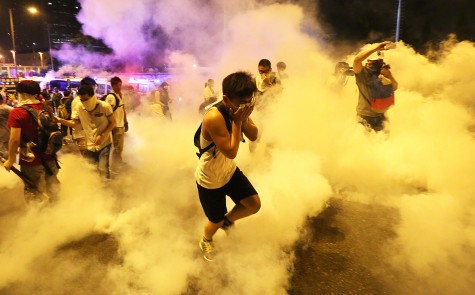Tear Gas Used to Control Protests

Tear gas is a non-lethal chemical weapon used to control protestors during their protest. However, this “non-lethal” gas is dangerous enough to be outlawed under the Chemical Weapons Convention for use in warfare. If we can’t use tear gas in war, is it safe to use against civilians?
On November 14, protestors gathered in Seoul, South Korea and rioted against the government and their president, Park Geun-hye. They challenged her ideas of government-issued textbooks and her business policies. Police created boundaries, blocking the people in and preceded to fire tear guns and water cannons at them. The police would not give an exact number of people injured, but they assume many were.
On November 29 people joined together in Paris to protest global warming. Paris is in a state of emergency due to the terrorist attacks, and originally 400,000 people were expected to participate in this protest, but only 200-300 people showed up. Some of these protesters were masked and attacked the police. Police, again, used tear gas to detain the crowds and arrest the protestors.

Tear gas is used all around the globe in domestic riot control, but it is also used in the U.S. A year ago, in August 2014, it was used against citizens protesting the Ferguson police in Missouri.
Tear gas works by irritating the eyes, nose, mouth and lungs. It causes crying, sneezing, coughing, difficulty breathing, pain in the eyes and temporary blindness.
However, scientists have proved in certain cases the long-term effects can be more serious. Those exposed to the gas may experience coughing, shortness of breath and other lung-related problems, delayed menstruation and reports of miscarriages and stillbirths. Other reports say that tear gas can cause damage to the heart and liver.
Are the risks really worth the results of using tear gas on protesters? If tear gas cannot be used in warfare, why can it be used against our own people? More research should be done to make sure it is safe to be used and so we can understand the long-term effects.






